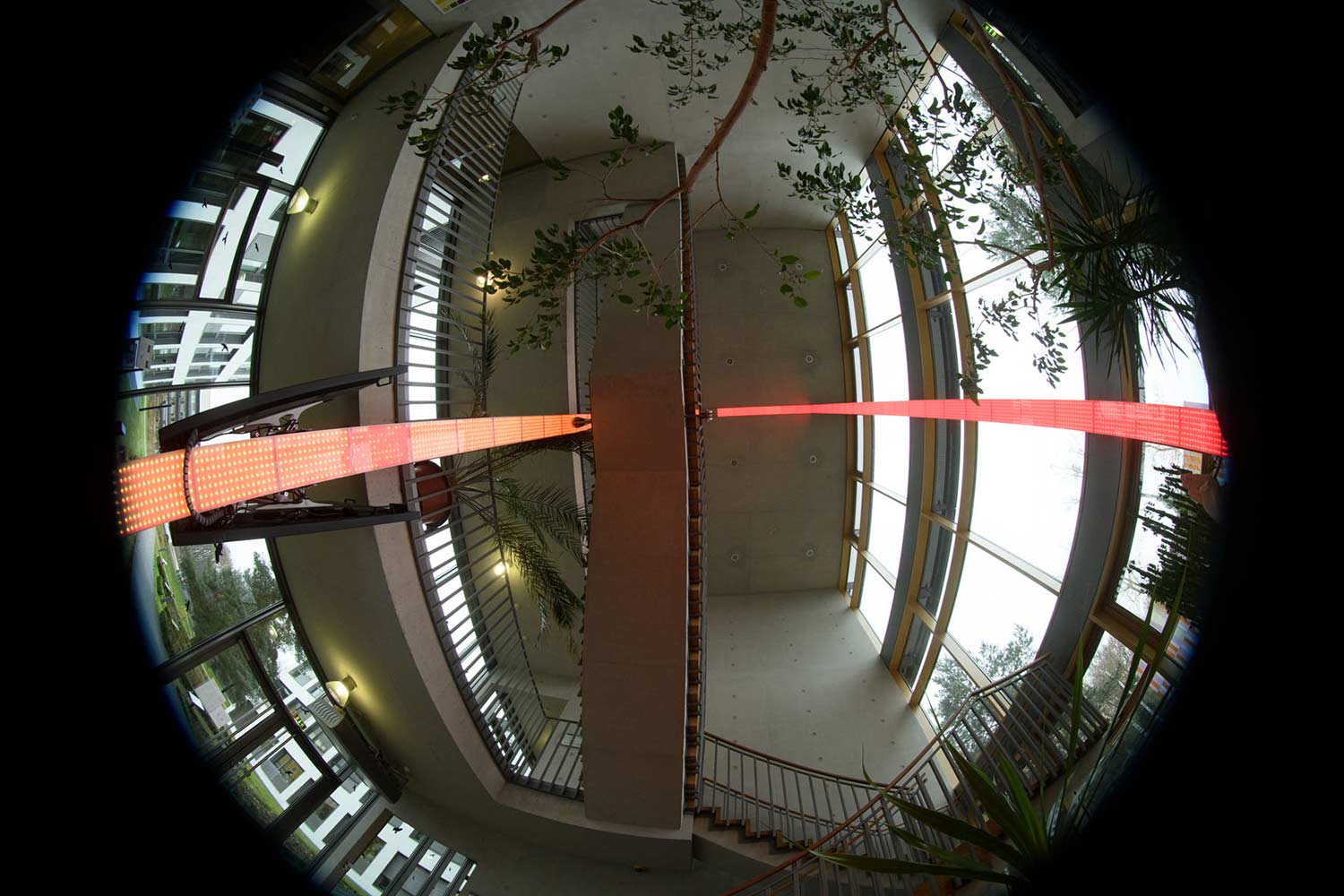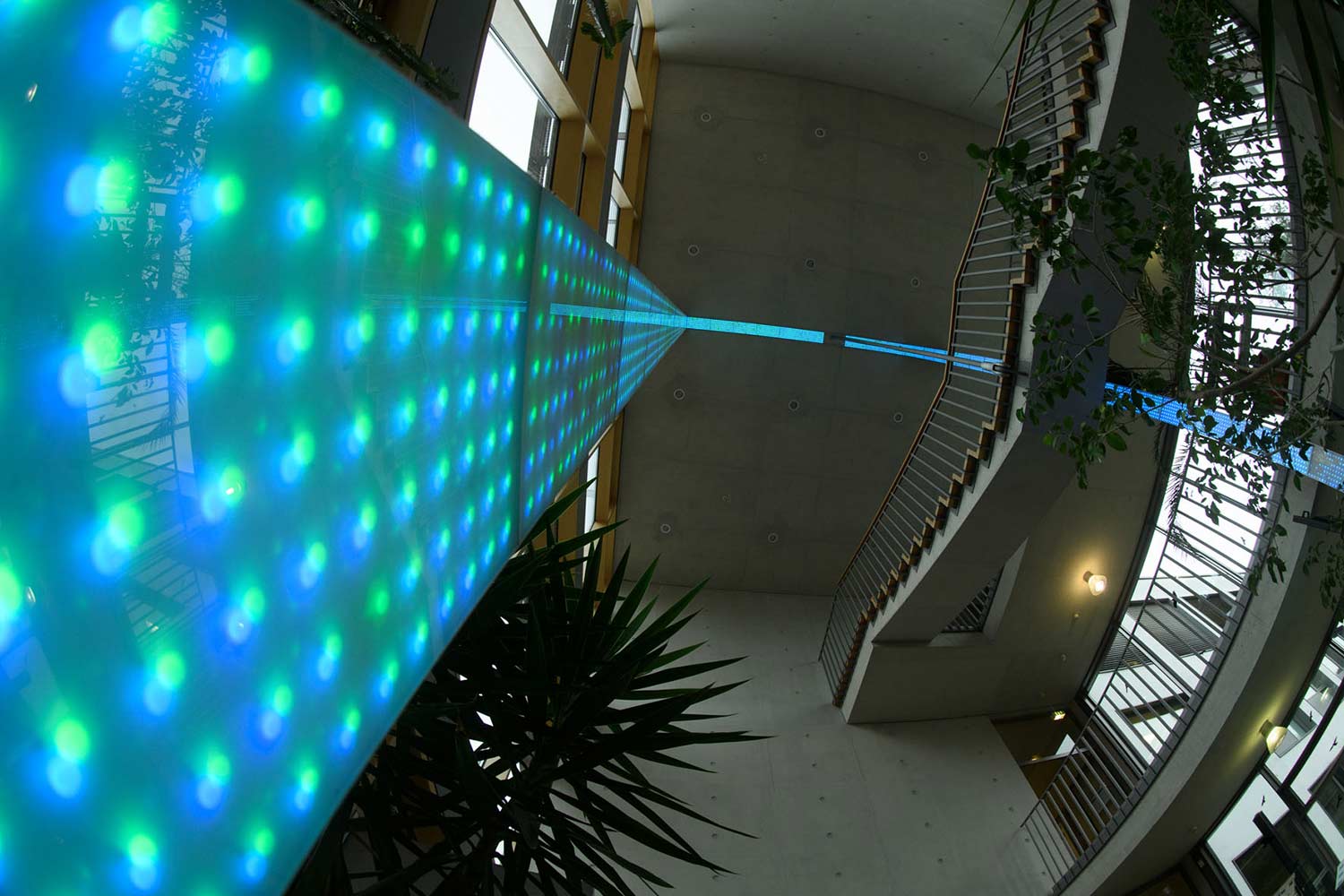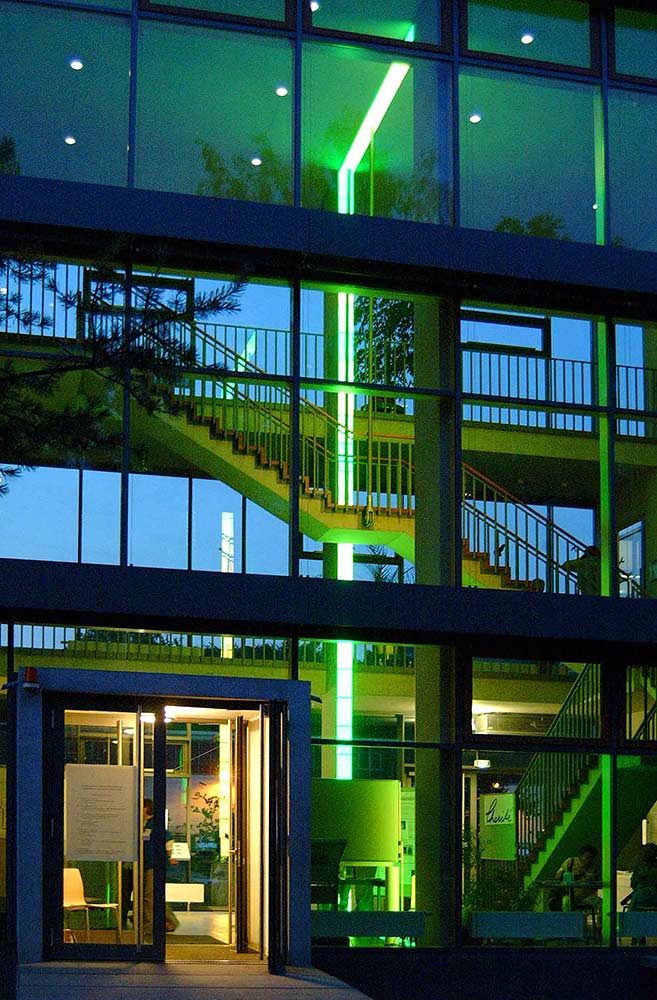8Lichttor
Volkhard Kempter
2002, Light installation

The foyer of the Leibniz Research Institute for Molecular Pharmacology (FMP) exhibits an eye-catching arc of LED strips that stretch across the floor, up the walls across the ceiling. This is the ”Lichttor” (Gate of Light), by the artist Volkhard Kempter.
Kempter was born in 1961 in Stockach on Lake Constance. Originally, he began studying philosophy at the University in Constance, then transferred to Berlin to study Fine arts and art education at the Conservatory of Arts in Berlin. After a stint as a set designer at the Modern Theater of Berlin, he received a teaching appointment at the Conservatory of Arts, followed by teaching at the Bauhaus in Dessau, the University of Arts in Berlin, and the University of Applied Sciences in Potsdam. Kemper received numerous fellowships and won a number of ”Kunst am Bau” competitions. His works are on public display and can be seen in numerous national and international exhibits.

The ”Lichttor” is an interactive installation. Visitors can enter through the foyer or via the stairway. In the process they create information that produces a color code spread across intervals. After two minutes the pattern dissolves into a uniform background color that moves across the strips until the signal is triggered once more.
The FMP in Berlin is the largest pharmacological research institution in Germany. New concepts by which pharmacological substances influence organisms are developed here. Scientists use imaging methods to decipher the way the body produces and passes biochemical signals; the artist has used this concept as a basic motif in his work.
On the one hand, the installation highlights the architecture of the building. It is located at the interface between the interior and the area of large-area glazing to achieve the maximum transparency of the light effect to the outside. The placement of elements on the columns indicate architectural structures that run the entire length of the building. Light is an immaterial medium that connects these structures to the work done at the institute.
Another connection can be seen in that here in the building, scientists produce data that can not yet be deciphered. The data only become ”visible” when transformed by knowledge. This allows us to see the ”Lichttor” as a sort of organism in which patterns are created through interactions. Like all organisms, it is also subject to the effects of time. Over the years, as it turns out, the trigger mechanism has changed and now the probability of eliciting a signal is very low.
Making this work had a fundamental impact on the artist himself. Shortly after its completion, it became clear that some of the components would rather quickly wear out, and the blue LEDs built into the light arrays stopped working. This made Kempter aware of the susceptibility of electronic components to the effects of time. As a result, the ”Lichttor” became a turning point for Volkhard Kempter, who began increasingly taking up themes of sustainability and making them visible in his work.
The installation was obtained through public funds known as ”Kunst am Bau” for the promotion of Art and Architecture.
You can find an interview with Volkhard Kempter here.
